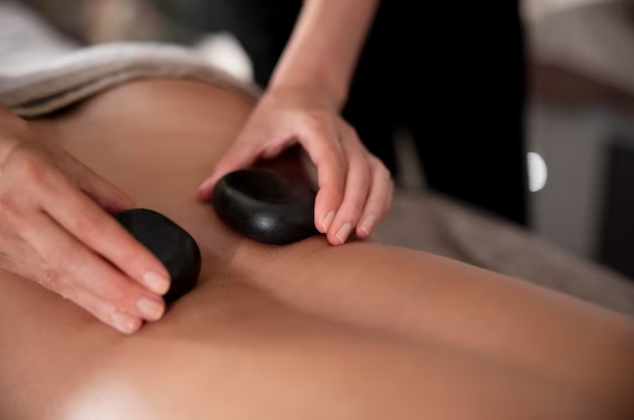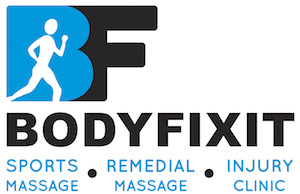Sports Massage
Terms Explained
1. Tension
When you have a massage, the therapist can feel tension within the muscles. We need some tension in the muscles for them to function properly and to have strength. The muscles need to be pliable and be able to bounce back and return to their natural length and tone.
When muscles are unable to return to their natural length, tension remains within the muscle. Muscles that have tension could be weak or they maybe strong and working too hard for another muscle that isn’t strong enough to do its job. Sometimes tension in muscles can build up if we are using muscles in a different way to support another muscle or if we are under using or guarding a particular movement.
Massage and stretching is a great way to release tension, alongside strengthening the muscles that are weak in order to create more of a balance.
2. Trigger Points
Triggers points are areas within a muscle or fascia which may feel like a nodule (or knot) which are described as hyperirritable. When pressure is applied to the area there maybe a local response or a global response.
What does that mean?
When we press the area, a local response could be warming, heat, local discomfort, tingling or pain. A global response could be that we are pressing on an area in the neck and the client feels a warming, tingling or pain in the arm.
Trigger points can occur due to muscle strain or overuse where the nerves become increasingly sensitised, as well as having an increased cellular metabolism and reduced circulation.
Trigger points can be active, which means that they create pain when touched, or latent, meaning they don’t create pain on touch.
Trigger points can be treated and improved with massage and sustained direct pressure, dry needling, muscle energy techniques, myofascial release, stretching and posture.
Personally I incorporate trigger point work into my everyday massage treatment and it works well for muscle aches and pains including headaches.

3. Myofascial release
Fascia is a thick and elastic connective tissue which surrounds all the muscles, organs etc in the body. Think of it being like the sauce in baked beans. If we looked under the microscope, the structure is like a multidirectional spiders web creating structure and stability. Integral lines of the fascia are called Myofascial chains – for example, the posterior chain runs from the sole of the foot all the way up the back of the body and round the to forehead.
Restriction within the lines or chains of fascia can limit movement within the whole body. For example if you have a restriction in the sole of the foot it can limit movement within the whole chain of the back of the body.
Myofascial release is a very superficial and very slow massage technique similar to when someone gave you a Chinese burn as a child, but hopefully more gently! The massage therapist needs light and slow pressure and to slowly move their hands along the muscle, fascia and skin.
This technique can be really useful for improving posture, pain and restrictions in movement.
4. Neurokinetic therapy
Neurokinetic therapy is a type of muscle testing technique which helps us to see which muscles are weak and strong and which muscles are working hard (compensating for others).
This testing technique helps us to be specific about the exercises we give clients as homework to release tight muscles and strengthen up weak or inactive muscles. It helps to get the brain re-talking to muscles where communication may be limited.
This helps us to reduce aches and pains, increase strength and stability, move better and maintain better posture positions.
5. Effleurage
Originating from the French word, meaning ‘to skim,’ effleurage is a massage technique used to sooth the body and mind. It is often used throughout a massage, particularly at the beginning and as a linking techniques, to spread lotion, warm up the skin, muscle and fascia etc. It can also be used as a deeper technique to be more stimulating.

6. Petrissage
Taken from the French word ‘petrir’ – meaning ‘to knead,’ this is a deeper massage technique and often follows effleurage.
This is a technique that can also be relaxing or stimulating depending on the approach and it can help to separate tissues and loosen adhesions (knots).
7. Friction
This is a great technique used to release tissues that are stuck together ie, muscle, fascia and scar tissue. It can aid in creating movement, separation and stretching of the tissues and can be used both superficially or deep.
This technique is useful for realigning fibres of the tissue and encouraging optimal healing. Some caution needs to be taken on fragile skin, scar tissue and people with diabetes due to a possible reduced sensation.
8. Hot stones
Quite a few people have been to a spa and had a hot stone massage or seen a picture of a body with hot stones lying on them. The picture doesn’t really represent what happens in a hot stone massage. The stones which are basalt from a volcano are heated up, often in a slow cooker with water and are then used individually for massage. The stones are then moved over the body to massage, we don’t tend to just leave them resting on the body as this would be too hot.
The therapist should always check the temperature of each stone as each individual can cope with a different temperature. Generally I find if I can’t hold the stone in my hand then it is too hot. When this is the case we can transfer the stone from hand to hand before putting it on the client which cools the stone and warms our hands whilst we massage.
When I use the hot stones I use the combination of the heat and pressure alongside my other massage techniques to release tension and increase pliability of the tissues. I don’t follow a routine and can use the hot stones for trigger point release as well. It is possible to use the stones cold from the freezer but I don’t tend to use this technique.

9. Soft tissue release
This is a technique used to create length in tissue that is tight or restricted. The therapist applies pressure to the tissue in one direction (known as a lock) and moves the muscle in the opposite direction.
Almost like a pin and stretch. This creates length, space and reduces tension. The movement of the muscle can be done by the therapist (passive) or the client can do it (active).
This is a great technique to use when clients are restricted in movement to help slowly restore some of the movement that has been lost.
10. Muscle energy techniques (MET)
This is similar to PNF stretching which quite a few people have heard of or tried before particularly in sport.
We are able to stretch muscles either actively (do it yourself) or passively (done for you). There are also two different techniques so depending on which technique we use we can either help the muscle to relax directly using that muscle or by using the antagonist (muscle that does the opposite movement), if we activate the antagonist this can help the other muscle to relax.

|






